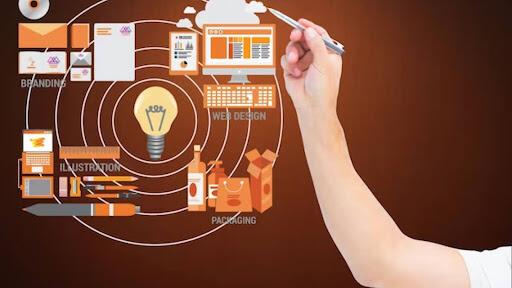A Comprehensive Guide to Integrated Development Environments (IDEs).

Success in the constantly changing field of software development depends thoroughly on having the appropriate tools. Developers use Integrated Development Environments (IDEs) as their command centers because they provide a centralized platform that makes coding more accessible.
The choice of an Integrated Development Environment depends on factors like programming language, project complexity, and personal preferences. Popular IDEs include Visual Studio, IntelliJ IDEA, Eclipse, and Visual Studio Code. Before settling on an IDE, consider factors such as language support, community support, and the specific features offered.
This in-depth manual delves into the ins and outs of IDEs, illuminating their features, benefits, and how they can significantly improve your development experience.
Understanding Integrated Development Environments (IDEs)
What are integrated development environments? They are software programs that combine all the necessary software development tools into one platform. For developers, they are a one-stop shop that offers a unified environment with code editors, debuggers, compilers, and other productivity tools.
Key Features of IDEs:
- Code Editors: IDEs have advanced code editors offering features like syntax highlighting, autocompletion, and code navigation. Ensures a seamless coding experience with minimized errors.
- Debugging Tools: Debugging is simplified with integrated tools that allow developers to identify and rectify issues within the code quickly. Breakpoints, step-through debugging tools, and real-time variable inspection are standard features.
- Build Automation: IDEs automate the build process, making it efficient and reducing the likelihood of build errors. This is particularly crucial in larger projects with complex dependencies.
- Version Control Integration: Most IDEs seamlessly integrate with version control systems like Git, providing developers with robust collaboration features, change tracking, and code repository management.
- Project Navigation: Integrated Development Environments facilitate easy navigation within projects. With features like project-wide search and intelligent code suggestions, developers can locate files and functions swiftly.
- Code Profiling and Analysis: Performance optimization is made easier with built-in code profiling and analysis tools. Developers can identify bottlenecks and optimize their code for better efficiency.

Popular Integrated Development Environments
Integrated Development Environments (IDEs) go beyond basic code editors, providing developers with a comprehensive arsenal of tools for building software across various languages and platforms. Let’s delve into four leading IDEs, highlighting their strengths and features to guide your development journey:
1. Visual Studio:
- Strengths: Powerful debugging tools, comprehensive code editing support for numerous languages (.NET, C++, Python, etc.), seamless integration with Azure cloud services, vast community and plugin ecosystem.
- Ideal for: Enterprise-level development, building applications for Microsoft platforms (.NET, Windows), large-scale projects requiring robust debugging and collaboration.
2. Eclipse:
- Strengths: Open-source platform, highly customizable with plugins, supports a wide range of languages (Java, C++, PHP, etc.), strong focus on enterprise development tools.
- Ideal for: Java development, open-source projects, and developers seeking a customizable and extensible IDE for various languages.
3. IntelliJ IDEA:
- Strengths: Intelligent code completion and refactorings, powerful debugging tools, comprehensive support for web development (HTML, CSS, JavaScript), and multiple editions for specific languages (Java, Web, Python).
- Ideal for: Java and web development, developers seeking intelligent code assistance, and advanced debugging capabilities.
4. Visual Studio Code:
- Strengths: Lightweight and cross-platform, modern interface, extensive plugin ecosystem for language support and functionality, Git integration, cloud support (GitHub, Azure).
- Ideal for: Web development (JavaScript, HTML, CSS), cross-platform development, and developers seeking a modern and customizable code editor experience with extensive plugin support.

Advantages of Using Integrated Development Environments (IDEs)
Integrated Development Environments (IDEs) are indispensable tools that transcend traditional coding practices. These comprehensive platforms bring forth many advantages, transforming the development landscape and empowering developers to craft innovative solutions with unparalleled efficiency.
1. Boosting Productivity:
- Intelligent code completion: IDEs suggest relevant code snippets and functions as you type, saving time and reducing errors.
- Seamless navigation: Jump between code sections, variables, and definitions easily using robust navigation features.
- Refactoring magic: Easily restructure and clean up your code with automated refactoring tools, ensuring maintainability and readability.
- Built-in tools at your fingertips: No more context switching! Debug, test, and build your code directly within the IDE, streamlining your workflow.
2. Streamlining Development Journey:
- Consistent environment: Say goodbye to configuration woes! Integrated Development Environments provide a standardized development environment across different machines, ensuring consistency and reducing setup time.
- Project management superpowers: Organize your code projects efficiently with built-in project management features, making collaboration and version control a breeze.
- Language-specific support: Enjoy tailored features and syntax highlighting for your chosen programming language, making development more intuitive and enjoyable.
3. Code Quality:
- Advanced debugging tools: Isolate and fix bugs precisely using powerful debugging features like breakpoints, variable inspection, and step-through execution.
- Static code analysis: Proactively identify potential issues and coding errors before they cause problems, ensuring cleaner and more maintainable code.
- Built-in testing frameworks: Seamlessly integrate unit and integration testing within the IDE, catching bugs early and promoting robust code quality.
4. Collaboration:
- Real-time code sharing: Work on projects simultaneously with your team using features like code sharing and collaborative editing.
- Version control integration: Track changes, revert to previous versions and manage conflicts efficiently with integrated version control systems like Git.
- Communication tools: Foster smooth communication within your team through built-in chat or integration with communication platforms.
5. Remember, You’re Not Alone:
- Vast community and resources: Leverage the expertise of a large and active community through online forums, tutorials, and plugin ecosystems.
- Regular updates and improvements: Enjoy continuous advancements and new features thanks to ongoing development cycles by the IDE makers.
By harnessing the power of Integrated Development Environments, you transform from a lone developer into a well-equipped knight, ready to conquer complex coding challenges with increased productivity, streamlined workflows, and exceptional code quality.

Setting Up an Integrated Development Environment
Integrated Development Environments (IDEs) are your trusty companions, offering a comprehensive toolkit to build and manage your codebases effectively. But, setting up your IDE correctly is crucial before starting your coding journey. Let’s explore the essential steps, customization options, and project environment configuration to empower you:
1. Installation and Configuration:
Installation: Begin your Integrated Development Environments journey by selecting and installing the appropriate Integrated Development Environment for your needs. Popular choices include Visual Studio, IntelliJ IDEA, Eclipse, and Visual Studio Code. Ensure you have the most recent version using a package manager or downloading the installer from the official website.
Configuration: After installation, delve into the configuration settings. Most IDEs provide many options to tailor the environment to your preferences. Adjust settings related to code formatting, theme, and keyboard shortcuts. Familiarize yourself with these configurations to create a personalized workspace that aligns seamlessly with your workflow.
2. Customization Options:
Themes and Styles: Integrated Development Environments offer various themes and styles to enhance visual comfort. Try different color schemes and font styles until you identify one that improves readability and meets your preferences.
Extensions and Plugins: Explore the extension marketplace or plugin repository for your chosen IDE. Extensions and plugins extend functionality, offering features specific to your programming language or project requirements. Whether it’s a linter, version control integration, or language support, leverage these add-ons to tailor your Integrated Development Environments to your unique needs.
Code Snippets: Set up and utilize code snippets for commonly used patterns or functions. This feature accelerates coding by allowing you to insert predefined code segments with a simple command, reducing repetitive typing and minimizing errors.
3. Setting Up Project Environments:
Creating a New Project: Initiate your development endeavors by building a new project within your Integrated Development Environments. Follow the prompts to define project details, choose a template, and set up the initial structure. IDEs often provide templates for common project types, streamlining the setup process.
Version Control Integration: Integrate your Integrated Development Environments with a version control system like Git. This step ensures efficient collaboration, change tracking, and an organized repository for your codebase. Familiarize yourself with basic version control commands within the IDE for seamless collaboration with team members.
Build Tools and Dependencies: Configure build tools and dependencies within the Integrated Development Environments depending on your project requirements. This step is crucial for automation, ensuring your project builds smoothly and dependencies are resolved without manual intervention.
Bonus Tip: Leverage online communities and forums dedicated to your chosen Integrated Development Environments. You’ll find valuable insights, tutorials, and plugin recommendations from experienced developers.
Crafting an IDE Ecosystem Tailored to Your Needs
As you traverse the path of setting up your Integrated Development Environment, remember that this ecosystem is your digital workshop. The foundation for a successful and pleasurable coding experience is laid by installation, configuration, customization, and project setup.

Best Practices for Using Integrated Development Environments
Integrated Development Environments are technological marvels, offering a consolidated space where innovation meets efficiency. By incorporating these best practices into your development routine, you can unlock the full potential of IDEs.
1. Unlocking Speed with Keyboard Shortcuts:
Embrace the efficiency-enhancing magic of keyboard shortcuts. Integrated Development Environments have many shortcuts that expedite everyday tasks, from code navigation to debugging. Invest time learning and integrating these shortcuts into your workflow to navigate your code swiftly and effortlessly.
2. Streamlining Code with Utilizing Code Snippets:
Code snippets are your secret weapon for streamlined coding. Create and utilize snippets for frequently used code patterns, saving you from repetitive typing and reducing the likelihood of errors. Customize your snippets for functions, structures, or any code segments you use often.
3. Navigating Version Control Best Practices:
Version control is the backbone of collaborative development, and Integrated Development Environments are designed to integrate seamlessly with systems like Git. Adopt best practices for version control, including creating meaningful commit messages, branching strategies, and regularly pulling updates from the repository. Ensure that your codebase remains organized, synchronized, and easily manageable.
4. Maximizing Collaboration Features:
Integrated Development Environments offer collaboration features that can transform your development experience. Leverage real-time collaboration tools, shared coding sessions, and integrated communication channels to foster seamless teamwork.
Utilizing collaborative features ensures that projects progress smoothly and knowledge sharing becomes a cornerstone of your development process.
5. Customizing Your Workspace:
Tailor your Integrated Development Environments environment to align with your preferences and project requirements. Customize themes, font sizes, and color schemes to create a visually comfortable workspace. Many IDEs also support extensions and plugins, allowing you to add functionalities that cater to your coding needs.
6. Efficient Debugging Techniques:
Integrated Development Environments provide robust debugging tools—master them. Learn to set breakpoints, step through code execution, and utilize real-time variable inspection. Proficient debugging saves time in identifying and resolving issues and enhances the overall reliability of your code.
7. Regularly Updating Your IDE:
Stay on top of updates for your chosen IDE. Updates often bring performance enhancements, bug fixes, and new features. Keeping your Integrated Development Environments up-to-date ensures you work in an optimized environment for efficiency and productivity.

Future Trends
The software development landscape constantly evolves, and Integrated Development Environments (IDEs) are no exception. As developers demand greater efficiency, collaboration, and intelligence, IDEs are poised to undergo significant transformations.
The reality of how IDEs evolve will depend on technological advancements, developer needs, and market forces. However, one thing is sure: Integrated Development Environments will continue to play a pivotal role in empowering developers to build tomorrow’s software.
1. Cloud-Based IDEs: Code Without Boundaries:
- Ubiquitous access: Ditch local installations and access your development environment from any device with a browser, fostering remote work and team collaboration.
- Scalability and elasticity: Leverage the on-demand resources of the cloud to handle large projects and complex workloads seamlessly.
- Enhanced collaboration: Cloud-based IDEs can facilitate real-time collaboration and code sharing, streamlining team development efforts.
2. AI-Driven Coding Assistance:
- Context-aware suggestions: IDEs will leverage AI to provide intelligent code completion, suggesting not just code snippets but entire functionalities based on your project and context.
- Automated code reviews: AI-powered tools will analyze your code, identify potential issues, suggest improvements, and act as your virtual code reviewer.
- Adaptive learning: These intelligent assistants will learn from your coding style and preferences, offering increasingly personalized suggestions and assistance.
3. Integration with Emerging Technologies:
- Blockchain development: IDEs will integrate tools for developing and debugging blockchain applications, catering to the growing demand for decentralized solutions.
- Quantum computing: As quantum computing matures, Integrated Development Environments will adapt to support this paradigm shift, providing specialized tools and visualizations for quantum algorithms.
- Edge computing: Development environments will integrate with edge computing platforms, enabling developers to build and deploy applications specifically for edge devices.
4. Evolving Trends in Developer Tools:
- Low-code/no-code development: Integrated Development Environments will incorporate low-code/no-code features, allowing non-technical users to contribute to development projects.
- Visual programming: Graphical interfaces will play a more significant role in development, enabling visual representation of code logic making it more accessible and intuitive.
- Security-first approach: Integrated Development Environments will integrate security testing and analysis tools directly into the workflow, preventing vulnerabilities from being introduced into code.
Stats Showcase: Unveiling the Impact of Integrated Development Environments (IDEs)
Market Presence:
- Global IDE market size: Expected to reach $7.71 billion by 2025, growing at a CAGR of 9.1% from 2020 to 2025.
- Dominant players: Visual Studio (39% market share), Eclipse (22%), IntelliJ IDEA (18%). (Source: TechJury, 2023)
Developer Preferences:
- Visual Studio is the most popular IDE for professional developers (51%).
- Visual Studio Code is the most popular IDE for web development (59%).
Productivity and Efficiency:
- IDEs can increase developer productivity by up to 20% thanks to features like code completion, refactoring, and debugging tools.
- Developers using IDEs report spending 30% less time on coding tasks than basic text editors.
Conclusion
In concluding our comprehensive exploration of Integrated Development Environments (IDEs), it becomes evident that these versatile platforms are not merely tools but dynamic ecosystems shaping the future of software development.
As we immerse ourselves in the multifaceted functionalities, advantages, and evolving trends of IDEs, we must recognize their pivotal role in fostering innovation, collaboration, and efficiency in the coding realm.
Integrating IDEs with emerging technologies is set to revolutionize how developers interact with their code. AI-driven coding assistance, Cloud-Based IDEs, and holistic project management tools mark a paradigm shift, ensuring that the development process becomes more agile, collaborative, and seamlessly aligned with the demands of the modern digital landscape.
In essence, the journey through Integrated Development Environments equips developers with powerful tools and invites them to be architects of innovation. As we embrace the ever-evolving landscape of software development, the symbiotic relationship between IDEs and microservice deployment emerges as a cornerstone for success.
How can [x]cube LABS Help?
[x]cube LABS’s teams of product owners and experts have worked with global brands such as Panini, Mann+Hummel, tradeMONSTER, and others to deliver over 950 successful digital products, resulting in the creation of new digital lines of revenue and entirely new businesses. With over 30 global product design and development awards, [x]cube LABS has established itself among global enterprises’ top digital transformation partners.
Why work with [x]cube LABS?
- Founder-led engineering teams:
Our co-founders and tech architects are deeply involved in projects and are unafraid to get their hands dirty.
- Deep technical leadership:
Our tech leaders have spent decades solving complex technical problems. Having them on your project is like instantly plugging into thousands of person-hours of real-life experience.
- Stringent induction and training:
We are obsessed with crafting top-quality products. We hire only the best hands-on talent. We train them like Navy Seals to meet our standards of software craftsmanship.
- Next-gen processes and tools:
Eye on the puck. We constantly research and stay up-to-speed with the best technology has to offer.
- DevOps excellence:
Our CI/CD tools ensure strict quality checks to ensure the code in your project is top-notch.
Contact us to discuss your digital innovation plans, and our experts would be happy to schedule a free consultation!
![Blog-[x]cube LABS](https://d6fiz9tmzg8gn.cloudfront.net/wp-content/uploads/2016/06/blog_banner.jpg)





